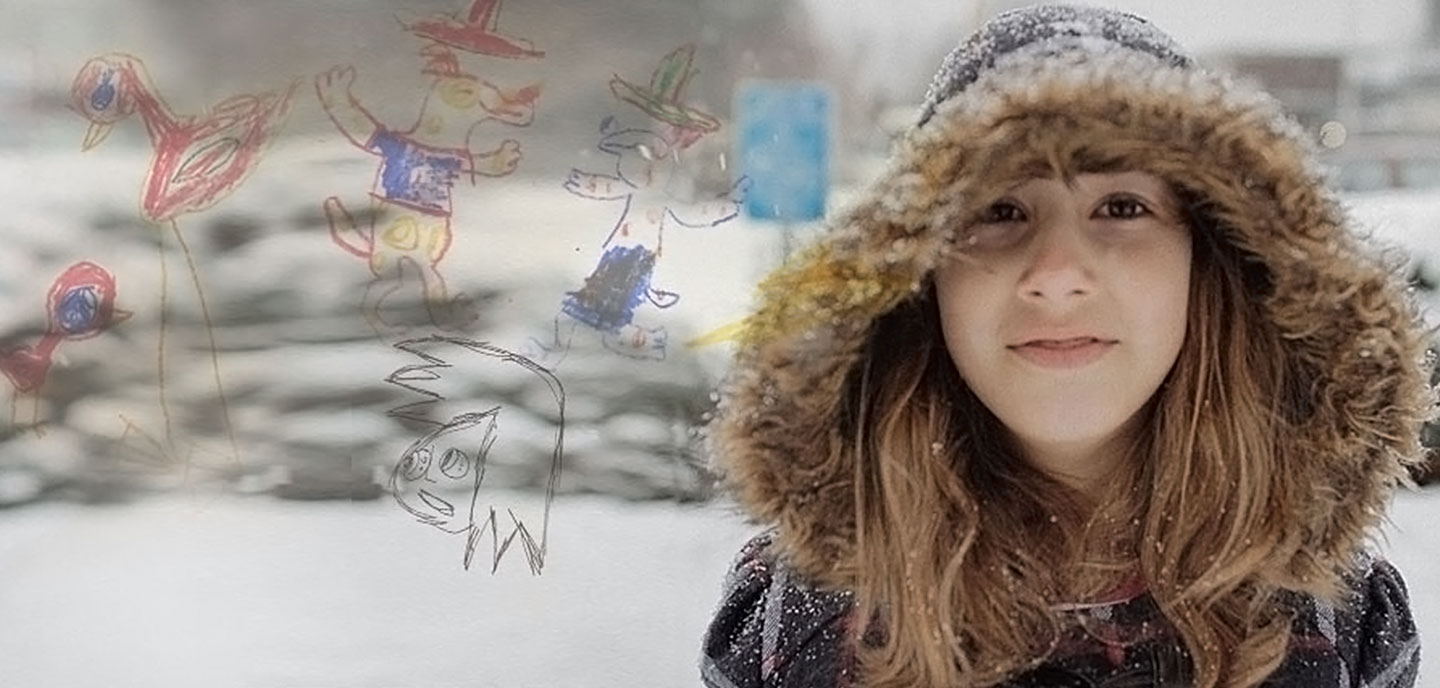16 Feb
“Anyone who has ever painted or drawn knows the experience of dropping out of the world of words and time. A state of reverie takes over; there is no sensation of the passing of hours. The voice inside our head that allows us to talk to ourselves falls silent, and there is only color, form, texture and the way things flow together.
There is a theory to explain this. Language is centered on the left side of the brain. Art lives on the right side. You can’t draw a thing as long as you’re thinking about it in words. That’s why artists are inarticulate about their work, and why it is naive to ask them, “What were you thinking about when you did this?” They have given it less thought than you have.”
– Roger Ebert, from his review of Basquiat.
I have the supreme privilege of having a best friend who is a little older than myself. As such, I get to watch and learn from how he raises his kids. He has three beautiful daughters. Interestingly, his middle daughter is an artist, and a very good one, with a great singing voice. My middle daughter is also a beautiful artist. Its often funny to hear my friend talk about his parenting experiences, because its as if I am looking through some mystical lens into the future. The things that he tells me about his daughter, parallel those of my own. One of the things we have had to tell both our artist daughters is, “use your words.” There are many occasions when communication breaks down, because we are trying to get to what’s going on inside her head, but it’s all very opaque to us, and perhaps on some level, to them as well.
The other day, I found myself in this very same situation. Not using my words. The all too familiar feeling of the focus and the fog was upon me. I had become intensely focused on a particular thing, while the rest of the world faded into a haze. I was working on lighting a set, and had to work through some creative problems. As an artist, the challenge is always how to make the reality of your imagination converge with the reality of the physical world. To do this, its almost like laying mental tracing paper over the world in front of us, and seeing what needs to shift and change in order to match up with the mind’s eye.
As Roger Ebert says, when you enter into this process, the right brain takes over, and the left brain is left out in the cold. When I was working out how to make the lighting work, I found it very hard to communicate with everyone. When I am working in this focused manner, I tend to mumble, and my sentences trail off with no real endings. Later that day, as I thought back to that experience, a bit embarrassed, I was reminded of my daughter, and how she often struggles to use her words. And though these situations are not always centered around her creating art, I think they are inherent to the personalities of artists. There are many times I catch her gazing off into the distance, seeing something no one else sees. And I understand. As artist’s its our job to connect the dots. We are challenged with exposing the connections between things that are not obvious, but feel like they should have been. I like to say that when I create art, I want people to feel as though they are having a memory of something they’ve not yet experienced.
The great saving grace in all of this is that just as the world needs those who can consistently “use their words,” It also needs those who can “use their voice.” What’s the difference? Your voice can come through your photography, painting, singing, writing, dancing, or whatever else you are using to communicate what’s inside of you that needs to come out. I think the challenge for artists is to give themselves grace during the creative process, but also engage in dialogue with others after the fact. This later part is critical because not only does it help us maintain relationships, but it helps us understand what it is we are doing and saying through our art. We may not really even completely know that in the creation phase.
I encourage all artists to lose themselves into the rapturous phase of creation, but not to forget to circle back around and engage with others. This will help not only in our work as artists, but in those moments where we find our self stuck in our right brain, because we are so often found there. I can’t tell you how many exits I have missed because of some seeming revelation that occurred to me while driving. We are always creating, but without the connection to those around us, we may miss out on fully understanding our own art, and therefore, ourselves. When you have both an intense focus on your work, as well as enlightening reflection and dialogue, we all learn that much more about ourselves and the world around us.



Sorry, the comment form is closed at this time.